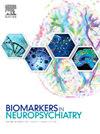A systematic review of in vivo brain insulin resistance biomarkers in humans
Q2 Medicine
引用次数: 0
Abstract
Type 2 diabetes mellitus (T2DM) is associated with an elevated risk of dementia, prompting interest into the concept of brain-specific insulin resistance. However, the brain's reliance on insulin-independent glucose transporters complicates attempts to measure in vivo brain insulin resistance using the definition of system-wide insulin resistance, which is based on glucose-insulin interactions. In this review, we explore three available biomarkers for evaluating in vivo brain-specific insulin resistance in humans: (1) correlating systemic insulin resistance with brain function, (2) examining functional brain changes after the administration of intranasal insulin, and (3) quantifying insulin signalling proteins in neuronally enriched blood-derived extracellular vesicles. Integrating evidence from these three approaches tentatively suggests for the first time that a comprehensive assessment of the brain's default mode network (DMN), combining these methodologies within a single study, may offer a useful biomarker to quantify in vivo brain-specific insulin resistance in humans. Correlating DMN responses to concentrations of pY-IRS-1 in blood-derived extracellular vesicles would corroborate evidence for a brain-specific biomarker and provide a scalable approach to detecting brain-specific insulin resistance in humans. This advancement would enable in vivo evaluations of insulin resistance in the central nervous system, akin to the precise measurements of systemic insulin resistance seen in T2DM. An established and clearly defined biomarker of in vivo brain insulin resistance in humans would permit further investigation into the links between diabetes and dementia, ultimately bolstering support for secondary dementia prevention by identifying those at higher risk for cognitive decline.
人体内脑胰岛素抵抗生物标志物的系统综述
2型糖尿病(T2DM)与痴呆风险升高相关,促使人们对脑特异性胰岛素抵抗的概念产生兴趣。然而,大脑对胰岛素不依赖型葡萄糖转运体的依赖使得使用基于葡萄糖-胰岛素相互作用的全系统胰岛素抵抗的定义来测量体内大脑胰岛素抵抗的尝试变得复杂。在这篇综述中,我们探索了三种可用的生物标志物来评估人类体内脑特异性胰岛素抵抗:(1)全身胰岛素抵抗与脑功能的相关性;(2)检测鼻内胰岛素给药后脑功能的变化;(3)量化神经元丰富的血源性细胞外囊泡中的胰岛素信号蛋白。综合这三种方法的证据,首次初步表明,在一项研究中结合这些方法,对大脑默认模式网络(DMN)进行全面评估,可能为量化人类体内脑特异性胰岛素抵抗提供有用的生物标志物。将DMN反应与血液来源的细胞外囊泡中pY-IRS-1的浓度相关联,将证实脑特异性生物标志物的存在,并为检测人类脑特异性胰岛素抵抗提供一种可扩展的方法。这一进展将使中枢神经系统胰岛素抵抗的体内评估成为可能,类似于在T2DM中看到的全身胰岛素抵抗的精确测量。人类体内脑胰岛素抵抗的生物标志物的建立和明确定义将允许进一步研究糖尿病和痴呆之间的联系,最终通过识别认知能力下降风险较高的人来支持继发性痴呆的预防。
本文章由计算机程序翻译,如有差异,请以英文原文为准。
求助全文
约1分钟内获得全文
求助全文
来源期刊

Biomarkers in Neuropsychiatry
Medicine-Psychiatry and Mental Health
CiteScore
4.00
自引率
0.00%
发文量
12
审稿时长
7 weeks
 求助内容:
求助内容: 应助结果提醒方式:
应助结果提醒方式:


